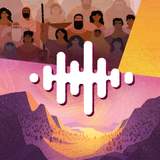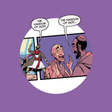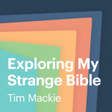The BibleProject podcast features detailed conversations between Tim and Jon and occasional guests, inviting you to explore the biblical theology behind each animated video and series we create.

After Jesus’ baptism, the Holy Spirit leads him into the wilderness to be tested for 40 days. The exodus generation spent 40 years in the wilderness, so we’d be right to expect parallels with their experience. But why does Jesus need to go through this wilderness test? And what does it mean for his followers? In this episode, Jon and Tim look at Jesus’ three wilderness tests, discovering the long-awaited faithful human who is ready to enter the garden land.

In the Bible, God often turns wilderness wanderings into times of testing, purification, and preparation for returning to the garden land. The tragedy of the Hebrew Bible, however, is that when people do return to the garden, they keep following their own distorted wisdom and desires. This is why the beginning of every gospel account features a wild prophet named John, who is out in the wilderness by the Jordan River, preaching a baptism of repentance. It’s a symbolic reenactment of when God purified the exodus generation through the deadly chaos waters and treacherous desert. But then Jesus approaches John, also asking to be baptized. Why? In this episode, Jon and Tim unpack the background and ministry of John the Baptizer and how Jesus’ baptism connects to his larger Kingdom mission.

By the time we get to the Prophets in the Hebrew Bible, the meaning of the wilderness is well established. It’s a desolate, dangerous place where humans can’t survive. And it’s a place where God meets with his people to reform their character and deepen their trust in him. But Israel’s prophets remix the meaning and imagery of the wilderness in surprising ways that prepare us for the story of Jesus. In this episode, Jon and Tim explore the wilderness in Hosea, Jeremiah, and Ezekiel, discovering unique portraits of a prison, romance, tragedy, and promise of a new heart.

In the Genesis and Exodus wilderness stories, God is present with his people, testing them and teaching them to listen to his voice. Most of the people fail to trust God there, but finally, in 1 Samuel, we meet a character who can succeed in the desolate place, David. In this episode, Jon and Tim explore David’s wilderness stories in 1 Samuel 24-26, finding a human who will trust God for provision and listen to his voice.

After 40 years of wandering in the wilderness, Moses and the second generation of Israelites stand at the border of the promised land. What does Moses say about the purpose of their time in the wilderness, and what do they need to remember about it when they’re in the garden land? In this episode, Jon and Tim look at Deuteronomy 8 and the hard lessons of the wilderness that can help the people flourish in the promised land.

After God delivers the Israelites out of Egypt, he tells Moses to lead them to the promised land—through the wilderness. This is perplexing because a much shorter, safer route existed along the coast. So why does God lead his people along the longer, harder way? In this episode, Jon and Tim explore Israel’s wilderness tests, reflecting on God’s plan to create a new people through a relationship of radical trust and dependence.

In the Bible, the wilderness is a hostile, dangerous place where humans can’t survive. Because of this, the wilderness also reminds us that we all live on the precipice of life and death, and our survival depends on the one who is greater than us. The Bible’s earliest wilderness stories depict humans finding themselves in this setting due to their own foolish choices or the foolish choices of others. In this episode, Jon and Tim look at the wilderness stories of Adam and Eve, Hagar, and Moses, highlighting how God responds with surprising compassion.

In the Bible, the wilderness is an uninhabitable, hostile place for human life. And in the creation narratives of Genesis 1 and 2, the wilderness symbolically represents the chaos of a pre-creation state. In this episode, Jon and Tim explore the wilderness language in the creation narrative and how it contrasts with Eden, God’s oasis of beauty, order, and abundance.

This year, we are looking at themes that play a prominent role in the Exodus story. And today, we’re starting a new series on the theme of the wilderness. The wilderness is a setting that shows up constantly in the Bible, and it mainly represents a hostile, barren place where humans can’t survive. So why does God repeatedly lead his people through it? In this episode, Jon and Tim introduce the theme and discuss how the biblical authors portray the wilderness as a place of testing, character formation, and even an Eden-like refuge.

Is deliverance from evil spirits a redemption from the evil one over to God’s possession? Was God demanding a redemption payment through Jesus’ death? And are salvation and redemption basically the same thing? In this episode, Tim and Jon respond to your questions from our Redemption series. Thank you to our audience for your thoughtful contributions to this episode!





